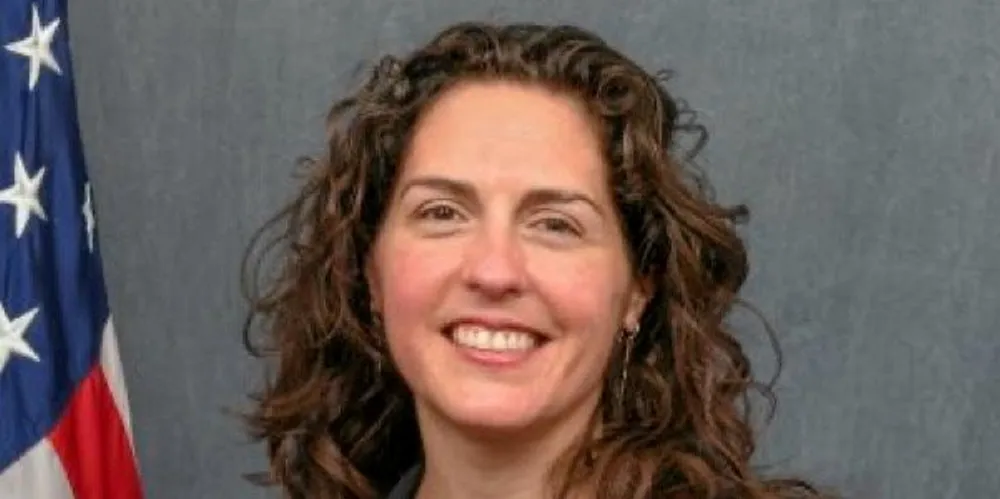Floating wind heaves into view in US Atlantic as Feds open vast offshore acreage to build-out
Bureau of Ocean Energy Management director Amanda Lefton opens 5.5 million acres of American waters to development by international and domestic players as Biden administration 'national goal' generates momentum in sector

The US government is seeking expressions of interest from the international offshore wind industry for development of six proposed new areas along the central Atlantic coast – two of which would call for floating arrays – and two in the Pacific facing the western state of Oregon.
The move, announced today by Bureau of Ocean Energy Management (BOEM) director Amanda Lefton at the International Partnering Forum in Atlantic City, New Jersey, represents a significant expansion of President Joe Biden's ambition for industry growth beyond the 30GW of capacity he is targeting for switch-on by 2030.
By comparison, the US has 2.24 million acres under lease for offshore wind research and commercial development thus far along the Atlantic seaboard, according to BOEM.
The two biggest proposed central Atlantic zones – marked as ‘E’ and ‘F’ off the coasts of Maryland/Virginia and Virginia/North Carolina, respectively – are in highly challenging ultra-deep waters on the outer continental shelf that would require floating turbine foundations.
“Great to see these areas being leased, but to deliver on this I think it could be helpful to see some DoE [Depart of Energy] funding to make sure that the right technology is being developed for these types of leases. It will need different innovation on mooring and cables versus what we are doing in the European market.”
Areas ‘A’, ‘C’, and ‘D’ are located adjacent to existing areas off the coasts of Delaware, Virginia, and North Carolina under lease to Orsted/PSEG, Dominion, and Avangrid. Area ‘B’ is a large standalone tract paralleling the coasts of Maryland and Virginia.
“The calls for information and nominations for Oregon and the Central Atlantic provide an important avenue to solicit information as we identify potential areas that may be suitable for future offshore wind energy leasing,” Lefton said.
BOEM will publish the calls on 29 April in the Federal Register, the official record of the US government, and that will initiate a separate 60-day comment period during which the public can submit relevant information on marine resources, ocean uses, and site conditions within the proposed areas.
Meanwhile, developers can nominate specific areas within the blocs that they would like to see offered for leasing, if they believe those proposed are too large or unsuitable as delineated.
BOEM will use industry and stakeholder feedback to narrow the area to be considered for offshore wind development leasing and then decide which tracts could be suitable for potential leasing.
Once chosen, the agency will conduct environmental reviews of the so-called Wind Energy Areas in consultation with the appropriate federal agencies, tribes, state and local governments, and other key stakeholders.
After completing its environmental reviews and consultations, BOEM may propose one or more competitive lease sales for areas within the WEAs. There will be multiple opportunities for public input throughout this process.
Liz Burdock, CEO of industry advocacy body the Business Network for Offshore Wind, said: “Opening new lease areas in the Central Atlantic will spark a second wave of domestic offshore wind development and bolster an emerging manufacturing core in places like Hampton Roads and Baltimore, and in Oregon, where the power of offshore wind can be unleashed along on the west coast.”
Erik Milito, president of the trade group National Ocean Industries Association, said expansion of seabed area for offshore wind development is welcome news. “The more offshore wind leases and the greater the geographical diversity of new American offshore wind projects, the greater the benefits will be to the national supply chain,” he said.
Washington, DC industry body the American Clean Power Association (ACP) praised the announcement as good for the environment, job creation, and progress toward US energy independence.
“President Biden set forth a bold vision to deploy 30GW of offshore wind energy by 2030. Today’s announcement from BOEM is bringing us one step closer to that reality,” said Josh Kaplowitz, ACP’s vice president for offshore wind.